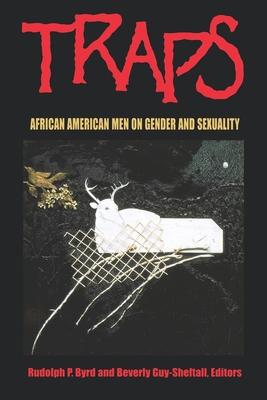"This is a valuable project. The editors are excellent, well-known scholars, and activists in the academy." --Darlene Clark Hine
"After looking carefully at Traps' selections, I have to confess that I'm both excited and satisfied by what Rudolph Byrd and Beverly Guy-Sheftall have assembled here from the 19th century to the present. Educators genuinely need a text like this for opening their classroom to critical discussions on the well-worn subjects of race and gender."
--Charles Johnson
Traps is the first anthology of writings by 19th- and 20th-century African American men on the overlapping categories of race, gender, and sexuality. The selections on gender in Sections I and II reveal what some may view as the unexpected commitment of African American men to feminism. Included here are critiques of the subordinate social, economic, and political position of black women. Sections III and IV analyze the taboos and myths in which black sexuality is enmeshed. These essays also stress the importance of rejecting homophobia and the need to contest the predominance of a heterosexual paradigm. Monolithic constructions of gender and sexuality, reinforced by sexism and historically sanctioned homophobia, are the "traps" that give this book its focus and its title.

Traps
"This is a valuable project. The editors are excellent, well-known scholars, and activists in the academy." --Darlene Clark Hine
"After looking carefully at Traps' selections, I have to confess that I'm both excited and satisfied by what Rudolph Byrd and Beverly Guy-Sheftall have assembled here from the 19th century to the present. Educators genuinely need a text like this for opening their classroom to critical discussions on the well-worn subjects of race and gender."
--Charles Johnson
Traps is the first anthology of writings by 19th- and 20th-century African American men on the overlapping categories of race, gender, and sexuality. The selections on gender in Sections I and II reveal what some may view as the unexpected commitment of African American men to feminism. Included here are critiques of the subordinate social, economic, and political position of black women. Sections III and IV analyze the taboos and myths in which black sexuality is enmeshed. These essays also stress the importance of rejecting homophobia and the need to contest the predominance of a heterosexual paradigm. Monolithic constructions of gender and sexuality, reinforced by sexism and historically sanctioned homophobia, are the "traps" that give this book its focus and its title.